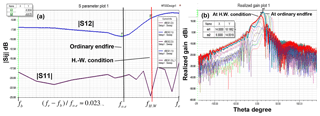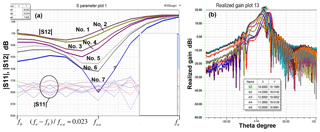Design of leaky-wave antennas with transverse slots for end-fire radiation with optimized radiation efficiency
A substrate integrated waveguide (SIW) with transverse slots on the top plane can be used to design an effective leaky-wave antenna with good frequency beam-scanning and platform integration capability. For a main beam near end-fire, the phase constant of the radiating wave must be near to the free space wavenumber or slightly larger. In this context, the modified Hansen-Woodyard condition gives an optimum phase constant to maximize the directivity at end-fire. For the analysis of the wave propagation we have implemented a modal analysis for rectangular waveguides with transverse slots. Near end-fire, three types of modal solutions exists, a leaky improper mode, a surface wave mode and a proper waveguide mode. The leaky mode can reach phase constants larger than the free space wavenumber to fulfill the Hansen-Woodyard condition, but loses strongly its physical significance in this slow wave region, thus the excitation of the leaky-wave becomes negligible there, whereas the proper waveguide mode is dominant but exhibits only a negligible radiation loss leading to a strong drop of the antenna efficiency. Therefore, the optimum efficiency of 86 % for maximizing the gain as proposed in the literature cannot be reached with this kind of leaky wave antenna.
But it will be shown in this contribution by analyzing antenna structures with finite aperture lengths, that the efficiency can reach nearly 100 % if the phase constant of the leaky-wave meets exactly the free space wavenumber (ordinary end-fire condition) and the aperture length is adjusted with regard to the attenuation constant of the leaky-wave from the modal analysis. For a given aperture length, a procedure is outlined to adjust the attenuation constant in several steps at the desired ordinary end-fire frequency to reach maximum gain and efficiency.













